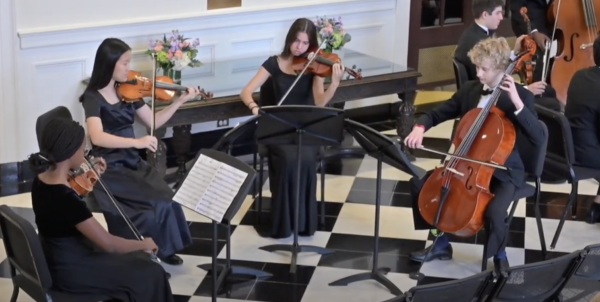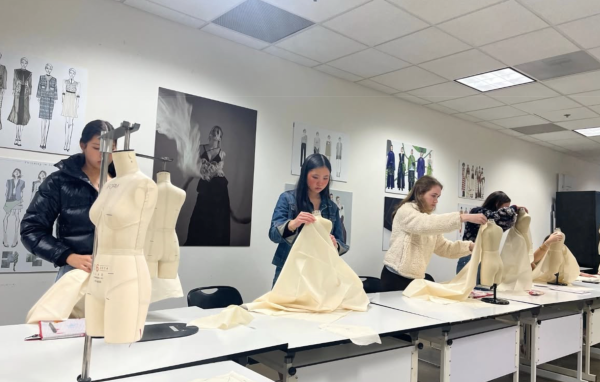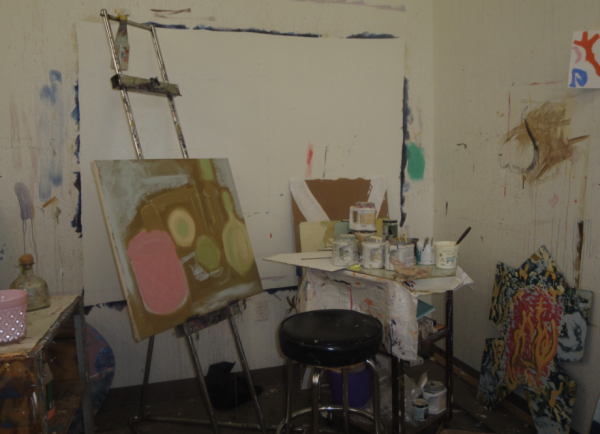Symphony concert to showcase band, orchestra
At 7:00 pm in McCain Chapel on March 1, the Upper School symphony orchestra will host a concert. The concert will include performances by the third grade Allegro orchestra, fourth and fifth grade Presto orchestra, Middle School Junior Chamber and Prelude orchestras, and an Upper School symphony orchestra. The symphony orchestra combines the Upper School Chamber Orchestra with some of the more technically advanced musicians from the Upper School woodwind, brass, and percussion ensembles.
“Playing [as a symphony orchestra] is not really new to us, but it’s special because it’s not something we get to do all the time,” said junior violinist Arman Varzi. “Whenever you get to join the two – band and strings – like that, it’s a pretty great and surreal experience for us.”
The formation of a symphony orchestra is a special occurrence for the students and takes extra dedication from both the musicians and the music faculty to coordinate.
“The music department can sometimes feel a bit separated between the band and orchestra,” said Varzi. “To come together with people you don’t usually play music with in a symphony orchestra is really exceptional.”
A challenge for the music faculty is finding ways to schedule symphonic rehearsals with minimum disruption to the school day, considering that band and string orchestra have different class periods. Throughout JanTerm during Community Time, the musicians accomplished a great deal of sectional work. Once each ensemble has understood components like rhythm and pitch in smaller groups, they must put it all together and play as one group.
“There are about 30 wind and percussion players we add to the 50 or so string players,” said performing arts chair and Upper School orchestra director Linda Cherniavsky. “We use some Wednesday mornings to practice, along with having students come a few times from other classes for half a period so we can work as a symphony orchestra.”
Given the difficult nature of the pieces they are playing for the concert, the musicians may feel they need all the practice they can get.
“As good as our orchestra and band are, this music is crazy,” said Varzi.
Beethoven’s Egmont Overture is one of the pieces being prepared – a standard repertoire piece often played by professional symphony orchestras. The other piece is John Powell’s soundtrack for How to Train Your Dragon, written exactly 200 years after the overture. There is quite a contrast between the works, one a late classical piece with a touch of romanticism, the other a dramatic and epic modern composition.
“Both pieces are technically difficult, and this is not a watered down concert in any way,” said Upper School instrumental music director Scott Stewart, who is co-conductor of the concert alongside Cherniavsky. “One of the takeaways from music in general is critical listening and having a more keen sense of what you are listening to, which is something that challenges students when in such a large orchestra.”
Although some of the musicians participate in symphonic orchestras outside of school, many string players are less familiar with such diverse textures of music and are learning how to balance their sound with the woodwinds, percussion, and brass.
“Whenever [the orchestra] works with other musicians, whether it be the band or the chorus, it’s a different style of play,” said Varzi. “Since it’s a much larger group of musicians, we have to really pay attention to the tempo and timing.”
The changes in tempo and timing are an extra challenge that comes with playing in a large group.
“We often have to listen a little more, since there are so many moving parts,” said sophomore violinist Phoebe Liu. “Normally you would be getting the melody in an orchestra, but in the symphony orchestra that’s not always the case.”
The melody can often shift to various instruments, and musicians sometimes have to take on a role they usually don’t in their usual band or orchestra.
“We love doing [the symphony orchestra] concert, because it takes us into a different form of musical expression,” said Stewart. “Everyone should come see it, and it’s not a long concert, but more of a hour long showcase.”
Orchestra concerts are a great way to discover something new and listen to beautiful music.
“Some people now don’t have as much of an appreciation for classical music as it maybe deserves,” said Liu. “I feel this concert will show people how much work it requires and how rewarding and enjoyable it can be.”



